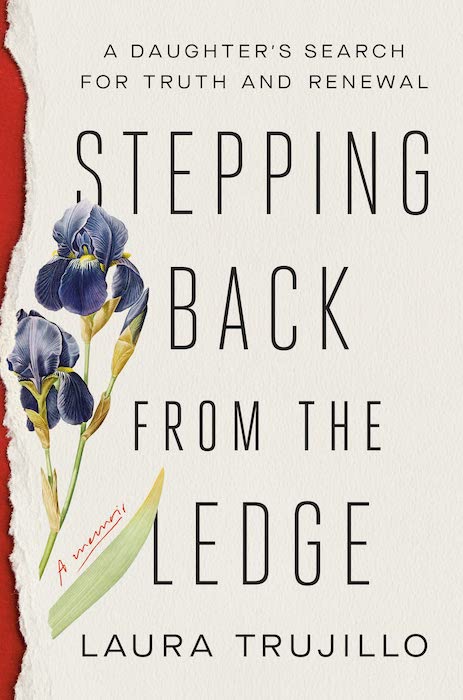
By Michael Greenberg
STEPPING BACK FROM THE LEDGE
A Daughter’s Search for Truth and Renewal
By Laura Trujillo
When a loved one dies by suicide, it can reverberate through the family for generations. In some instances, the emotional toll is worse than that of a murder. If — and this is a crucial “if” — the murderer is convicted and the motives and circumstances of the crime are aired, the family can at least clothe its grief in a conclusive story. In the case of most suicides, family members are left with the agony of guessing, and the guilt that ensues — I could have saved her, if only I’d heeded the signs — can lead them to imagine that they are inadvertently the killers themselves.
In her moving memoir, “Stepping Back From the Ledge,” a veteran journalist takes readers to this difficult place. Here’s the history, painful as it will be to read: On April 26, 2012, Laura Trujillo’s mother killed herself by jumping from the edge of the Grand Canyon. Mother and daughter were extremely close, and the circumstances surrounding the suicide make the web of Trujillo’s emotions a challenge to untangle.
Several months earlier, a visit to her stepfather at a rehab center where he was recovering from a stroke provoked vivid memories of his repeated intrusions into her bedroom to rape her from the time she was 15. The abuse continued throughout her adolescence, and to protect her mother, who seemed rejuvenated by her new marriage, Trujillo bore it in frozen silence. “She had her confidence now, joy, and I couldn’t ruin that, I told myself, no matter what he did to me.”
Trujillo was a happily married mother of four, with a fulfilling job as managing editor of The Cincinnati Enquirer. Recollections of her stepfather’s abuse shook the foundation of her life, to say the least, so her therapist suggested that she tell her mother what happened. Shock and guilt followed the revelation and their rich relationship became fraught and strained. Hoping to repair the rift and unburden herself of her trauma, Trujillo sent a long email to her mother, expressing all that she had felt and experienced. One of the haunting questions is whether her mother knew what was happening with her stepfather. “I told her I didn’t forgive her, because I didn’t need to forgive her. It wasn’t her fault. It was his.”
Two days after receiving the email, her mother killed herself. “I was certain I was responsible,” writes Trujillo. To make matters worse, her maternal grandmother and her mother’s siblings blamed her for the tragedy. They ostracized her and her children at the funeral, embracing the abuser, now a hobbled, elderly man, seemingly incapable of the crimes he had committed decades ago.
The loss of her mother plunged Trujillo into a deep depression. She plotted her own death, writing (and rewriting) goodbye notes to her husband and children. Trujillo ably describes the pernicious logic of suicidal depression. Ending it all became the only reasonable solution: “I truly believed at the time that my children would be better off without me — it seemed so normal and obvious.” The decision provoked a temporary sense of relief and calm. Enveloped by this feeling, she headed toward the Grand Canyon to join her mother.
How the author stepped back from this ledge constitutes the heart of the story. The process is slow, almost imperceptible at first. In a memoir like this, the author must be both scientist and lab rat, painstakingly dissecting her mother’s behavior and her own under duress. When Trujillo struggles to convey the most trying experiences, her inarticulateness becomes a form of eloquence. Among her realizations is that suicide is a mysterious and unknowable aspect of being human.
As mysterious are the ways we find to heal. Trujillo inherits a bracelet that her mother wore on her right arm on the day of her death. The bracelet is bent, and Trujillo wants to know if this is because of the impact of the fall. In the course of her investigative work, she reads the medical examiner’s autopsy report, which indicates she fell on the left side of her body. The “bend in the bracelet must have been simply from my mother squeezing it to fit on and off her wrist.” In the irresoluble shadow of suicide this fact offers comfort.
The most enduring pain is in the impossibility of understanding why. Trujillo’s mother had bouts of depression throughout her life. Is this knowledge enough to alleviate her daughter’s agony of self-blame? With suicide, Trujillo writes, “only one person ‘gets’ an ending; the rest of us are left with a story abandoned midsentence.” Fearlessly, Trujillo attempts to complete the sentence. For many who have been touched by suicide, her hard-earned story will be a helpful companion.
Complete Article ↪HERE↩!
